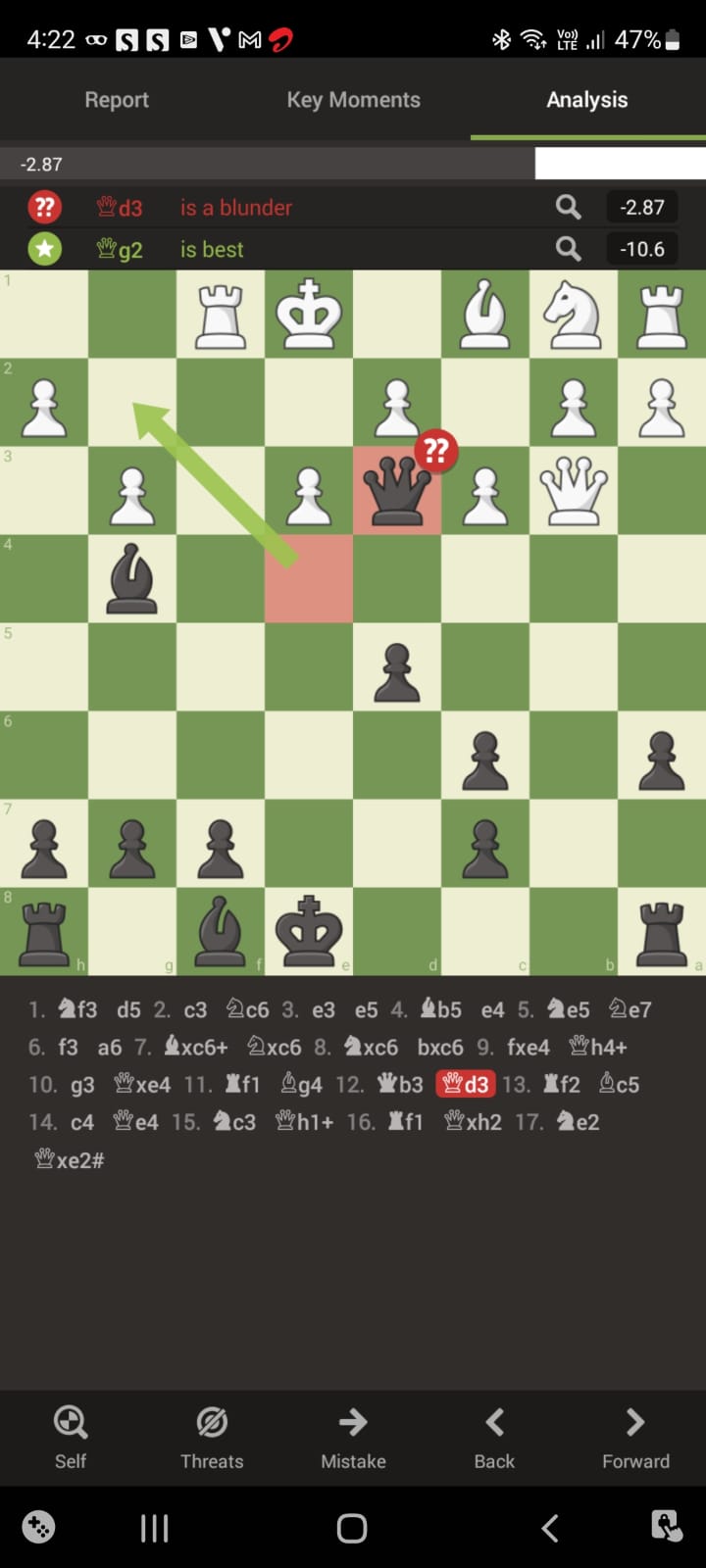blunder Analysis
After Qd3, white plays Rf2 and there are better follow-up defensive moves than white had played (such as Qa4). Black has solid advantage, though.
After Qg2, mate is practically inevitable. 13.Rf2 Qg1+ 14.Rf1 Qxh2 followed by Bd6 hitting the g pawn. In some lines if white plays Qb7, black can go ahead and sacrifice the rook(s) and still checkmate white. It looks like the only way for white to avoid mate is to sacrifice the queen with Qd1. Then it's a bloodbath.
I think "missed win" would have been a better descriptor than "blunder".
Yet what he said wasn't completely right. The idea is, the execution isn't. Qd3 threatens checkmate, but Qg2 does so too. It is right that black wins 2 pawns by continuously making the same threat: 12. ... Qg2, 13. Rf2 (forced to protect mate on e2), Qg1+; 14. Rf1 (only move), Qxh2 (again the mate threat); 15. Rf2 (again: only move), Qg1+; 16. Rf1, Qxg3+; 17. Rf2. But checkmate isn't immediately there. Especially after Qxh2 black can't immediately add the bishop, because Rf2 is attacking the black queen. After 17. ... Qg1+; 18. Rf1, Qh2; 19. Rf2, Qh1+; 20. Rf1, Qh4+; 21. Rf2 only now we can play 21. ... Bd6, threatening Bg3 winning the pinned rook. Notice white can't unpin there with 22. Kf1, because 22. .... Qh1 is mate.
I think it's a mistake to miss the fact that black can win both the h- and g-pawn, but not being able to work it all out is quite understandable. It's even more so when you're focusing on mate, which is logical with the given position. I think you don't have to be overly upset that you missed this win.
Yet what he said wasn't completely right. The idea is, the execution isn't. Qd3 threatens checkmate, but Qg2 does so too. It is right that black wins 2 pawns by continuously making the same threat: 12. ... Qg2, 13. Rf2 (forced to protect mate on e2), Qg1+; 14. Rf1 (only move), Qxh2 (again the mate threat); 15. Rf2 (again: only move), Qg1+; 16. Rf1, Qxg3+; 17. Rf2. But checkmate isn't immediately there. Especially after Qxh2 black can't immediately add the bishop, because Rf2 is attacking the black queen. After 17. ... Qg1+; 18. Rf1, Qh2; 19. Rf2, Qh1+; 20. Rf1, Qh4+; 21. Rf2 only now we can play 21. ... Bd6, threatening Bg3 winning the pinned rook.
I don't see how that is any different than what I said. When said "followed by Bd6", of course I didn't mean on the very next turn. After 17...Qg1+ 18. Rf1 Qxg3+ 19. Rf2, Bd6 mate is inevitable. Actually 19...Be7 may even be better.
